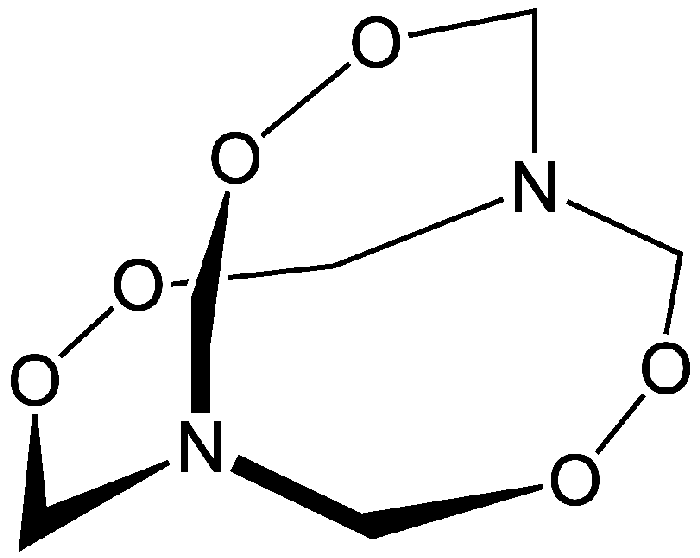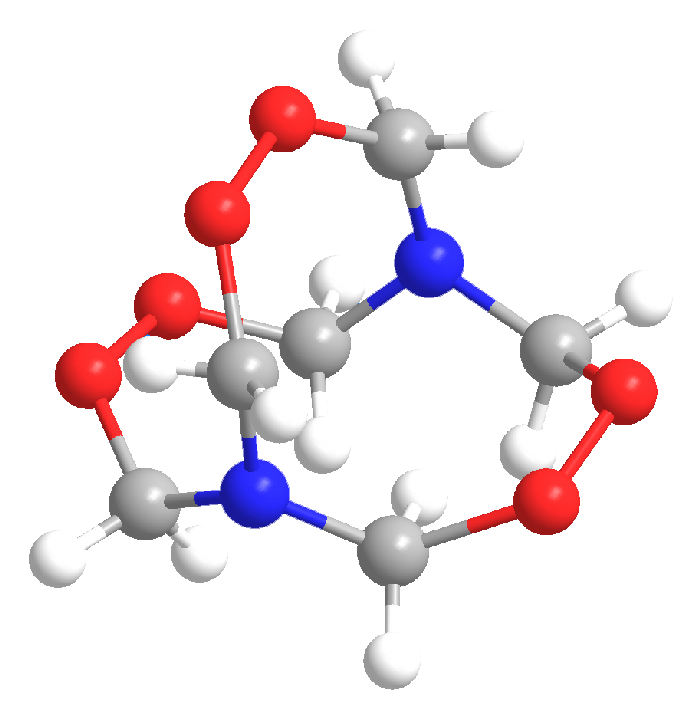What molecule am I?


One of the horrific events of 2016 was the July 16 New York City bombing that injured 31 people. Initially, the explosive used was identified as Tannerite, a mixture of aluminum powder and a nitrate salt. Officials later decided that Tannerite alone could not have caused the blast.
Additional forensic work showed that hexamethylene triperoxide diamine (HMTD) was also used. The suspect was believed to be involved in a New Jersey bombing on the same day; HMTD was also found at that site.
German chemist L. Legler first synthesized HMTD in 1885. It is usually prepared via the reaction of hydrogen peroxide and hexamethylene tetramine in the presence of a small amount of acid.
HMTD is a powerful explosive, but it is not easy to handle. Shock, friction, heat, and reaction with common metals can cause it to detonate. Although it is more stable than other peroxides, it is not used commercially or by the military.
Because HMTD can be made easily from common chemicals, it is often used by suicide bombers and other terrorists. Its instability is presumably not a problem in these applications.

Learn more about this molecule from CAS, the most authoritative and comprehensive source for chemical information.
Molecule of the Week needs your suggestions!
If your favorite molecule is not in our archive, please send us a message. The molecule can be notable for its current or historical importance or for any quirky reason. Thank you!
Stay Ahead of the Chemistry Curve
Learn how ACS can help you stay ahead in the world of chemistry.

